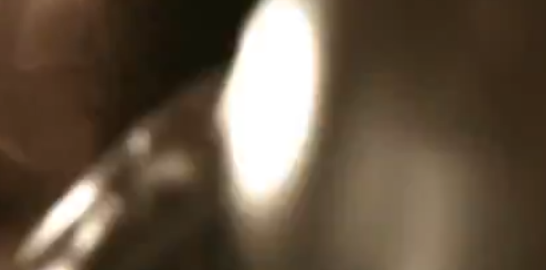I love technology. But in this series on technology that sucks, I use hyperbole for entertainment and to point out areas that have stalled out. Stalled technological progress sucks.To be clear,
lossy compression sucks.
Lossy compression facilitated delivery of relatively high-quality digital content to consumers, and that is acknowledged. But lossy compression has outlived its welcome.
We tolerate it today because we've grown accustomed to it and we accept low-bandwidth distribution channels such as today's "broadband" Internet connectivity.
In fact, lossy compression is as much used as rationale for stagnation in Internet connectivity as vice-versa. Connectivity is considered by many as "good enough" because you can shove a lossy-compressed
1080 video down without worry over a connection measured in the paltry few megabits per second.
Even the most avid technophiles (broadbandophiles?) among us chuckle to ourselves when we upgrade our connection from 25Mbps to 35Mbps. We know it's in large part for ego, so we can post screen caps of bandwidth meters.
It doesn't mean an ultra secret uncompressed 4K Youtube mode gets unlocked for us. No, we're still stuck with 1080 and lossy compression like the rest of the plebes.
Along with
limited color space, lossy compression reinforces the need to suspend disbelief when watching digital video. We can't feel that we're observing the scene through a pane of glass because the world on the other side of that glass is smeared and distorted in unnatural (but now all too familiar) ways.
An example
As if you needed one, right?
I recently re-watched a favorite Youtube video,
Fight of the Century. This video enjoys the somewhat rare option of 1080 playback on Youtube.
And although I still found the video entertaining, I bristled at the low quality, mostly due to compression.
Note that I've used lossless PNGs for all the images below.Scaled down to a small size, it looks fairly crisp:

But this is what a cropped section actually looks like when played full-screen:

There's plain out of focus, and then there's this hideousness. It's out of focus and transformed into a mess of blocks.
"Good enough" advocates will say this is acceptable because it's part of the background; it's not the subject of the scene. Trouble is, lossy compression doesn't really know what the subject is. Lossy compression is especially bad when the subject is moving.
Here's a boxing glove to the face:

Like any director, the director of this video gets to create a fantastic scene with lighting, angle, and focus. Post-production teams then can tweak the results further in the digital domain. But what the director didn't count on, or at least has no control over, is the horrible compression artifacting.
For that reason, my key point is this: nothing in real life ever looks like this! I could conceivably set up spot low color-temperature lighting to recreate this scene in real life. But nothing I can do, short of painting color-stepped smudges on the glove, would approximate what we see in digital video.
It detracts from my enjoyment of content in every context: desktop, living room, even on small devices (although consuming content on small devices is itself disappointing for entirely other obvious reasons).
I am tired of lossy compression in video. It's most certainly
not good enough. In time, I hope we will see lossless video achieve some nominal popularity, which in turn might stir some
needed renaissance on the desktop. It will be disappointing if we're still encumbered by lossy compression ten years from now.
That was then
Thank you, lossy compression, for making awful games like
Night Trap possible, and I suppose more importantly, DVD video possible in 1995. Dispatching the atrocity of VHS was quite an accomplishment.
But seventeen years after DVD, and you're still here? It's over. Go home! Go.
A reader, Florian Bosch, pointed out that dismissing compression outright smells of science fiction.Florian's point is a great one. Discarding lossy compression is definitely science fiction given where we find ourselves today.However, where we are today is the result of changing priorities in the past decade. We stopped progressing network bandwidth forward as aggressively as we did in the preceding decade. We stopped progressing storage as aggressively.In practice, we can't just discard compression as much as I'd like to. Few of our computers and networks would be up to the task.Still, I'd like to see evolution away from compression as a target. I'd like to see dramatically less compression in the short-term.
 But this is what a cropped section actually looks like when played full-screen:
But this is what a cropped section actually looks like when played full-screen: There's plain out of focus, and then there's this hideousness. It's out of focus and transformed into a mess of blocks."Good enough" advocates will say this is acceptable because it's part of the background; it's not the subject of the scene. Trouble is, lossy compression doesn't really know what the subject is. Lossy compression is especially bad when the subject is moving.Here's a boxing glove to the face:
There's plain out of focus, and then there's this hideousness. It's out of focus and transformed into a mess of blocks."Good enough" advocates will say this is acceptable because it's part of the background; it's not the subject of the scene. Trouble is, lossy compression doesn't really know what the subject is. Lossy compression is especially bad when the subject is moving.Here's a boxing glove to the face: Like any director, the director of this video gets to create a fantastic scene with lighting, angle, and focus. Post-production teams then can tweak the results further in the digital domain. But what the director didn't count on, or at least has no control over, is the horrible compression artifacting.For that reason, my key point is this: nothing in real life ever looks like this! I could conceivably set up spot low color-temperature lighting to recreate this scene in real life. But nothing I can do, short of painting color-stepped smudges on the glove, would approximate what we see in digital video.It detracts from my enjoyment of content in every context: desktop, living room, even on small devices (although consuming content on small devices is itself disappointing for entirely other obvious reasons).I am tired of lossy compression in video. It's most certainly not good enough. In time, I hope we will see lossless video achieve some nominal popularity, which in turn might stir some needed renaissance on the desktop. It will be disappointing if we're still encumbered by lossy compression ten years from now.
Like any director, the director of this video gets to create a fantastic scene with lighting, angle, and focus. Post-production teams then can tweak the results further in the digital domain. But what the director didn't count on, or at least has no control over, is the horrible compression artifacting.For that reason, my key point is this: nothing in real life ever looks like this! I could conceivably set up spot low color-temperature lighting to recreate this scene in real life. But nothing I can do, short of painting color-stepped smudges on the glove, would approximate what we see in digital video.It detracts from my enjoyment of content in every context: desktop, living room, even on small devices (although consuming content on small devices is itself disappointing for entirely other obvious reasons).I am tired of lossy compression in video. It's most certainly not good enough. In time, I hope we will see lossless video achieve some nominal popularity, which in turn might stir some needed renaissance on the desktop. It will be disappointing if we're still encumbered by lossy compression ten years from now.